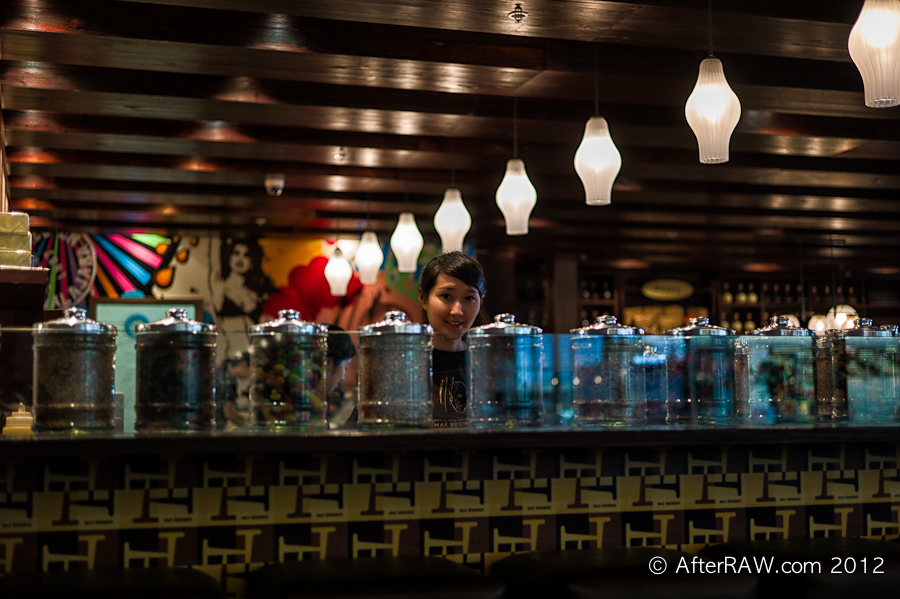(My) Exposure
Digital SLR (D-SLR), nowadays, allows virtually anyone to self proclaim photographer and it’s what technology is all about.
I’ll be sharing with you some of my experience on exposure.
This is not a scientific essay nor a lecture on how you should expose, this is just a summary of facts and trial and errors through out a few year of shooting commercially.
Since digital came along, a lot has been written on how to meter and expose, the famous ETTR or expose to the right of the histogram, the famous histogram itself, the blinking highlights and all the theories on how you should put the center of your meter index..
On a D-SLR, when looking through the viewfinder, you’ll see how your camera meters for what it thinks is the best exposure, in most situation, if you shoot in creative mode (automatic), P, Av for Canon and A for Nikon or Tv for Canon and S for Nikon, your meter would be in the middle. That is of course if you haven’t dialed in any exposure compensation.
Remember, auto or semi-auto modes will give you a so call good exposure for the scene where you are pointing your camera to.
If you shoot in manual, where you’ll have to dial in your speed (Tv) and aperture (Av) on a set ISO and try to have a ‘correct’ exposure.
So, what is a correct exposure?
I’d say it took me a while to follow advice and techniques in books and web posts, all come to the same conclusion. The correct exposure is the one you are happy with to tell the story of the picture you just created.
There is no theory, technique or text book on telling you how to expose properly a scene. Remember, one image tells a thousand words and if the viewer can not read the story when looking at your photo, you are a bad story teller (read you failed in reporting the story of your image).
One thing to bear in mind is that you have to drive the viewers’ eyes to where you want them to look so they can read the story through your photograph.
There are a few “myths” that people believe in and I think it is worth to discuss here, let me know your feelings in the comments below.
[label style=”red”] Myths & Facts[/label]
– ISO is everything
Digital SLRs give us the flexibility of changing the ISO on the fly depending on what we need for a particular time. The days when you had to decide what ISO film to load into the camera when heading out to shoot an assignment are over.
When there are good things about ISO range, I sometime still think that it is a double edge because this option will not force you to be rigorous enough in the choice of your lens and the way you meter.
Newly released camera are able to “see” in the dark and just dialling in the ISO value give me the vertigo.. Did you know that the higher your ISO setting is, the less colour you’ll be able to reproduce? Why do people instantly convert an image into black and white when it is dark or with very little light in them?
I read in a lot of forums and blogs that people ask for limitless ISO and complain about noise .. it’s like.. WTF.
– Dynamic Range
I would trade the high ISO capability of my cameras for a higher or wider dynamic range of the sensor.
To me, other than marketing value, hi ISO range, at high ISO settings, will not allow me to reproduce a scene with all its authenticity but just an acceptable reproduction of the past, sometimes better, sometimes worse.
For alost two year now I have invested into medium format (HasselBlad) and shoot with a H4D40 and the maximum ISO setting is 1600 but I have a dynamic range of 12 stops that would allow me to reproduce a scene almost as seen as human eyes.
Did you know that a very small percent of human “eye sensors” can see in colour? Did you know that in the dark our eyes see in almost a black and white mode? So if I want to reproduce a scene with a very low contrast I would need a wider dynamic range.
If you have heard of HDR, you’ll know that varying the exposure (mainly the shutter speed value) into several exposures or capture, would give you a bunch of images that you can combine (or stack) together to reproduce a deep detailed image.
– IS, VR, OIS.. in short Image Stabilisation (Canon)
The is an awesome feature of modern technology and it should be available everywhere for everyone to use.
When some major manufacturers choose to only integrate this technology in some high end lenses, other have put it inside the body, which means that whatever lens you will attach in front of the camera, your shaking hands will still take sharp photos IF your subject DOESN’T move.
With some lenses, Image Stabilisation (or VR, OIS…) would allow you to shoot at insanely low shutter speed and still have excellent quality images.
– Lens
I chose to mention Lens as singular because there are a lot of lenses that have such a long name that it’s purely for marketing purposes and should not be used when you want to adventure yourself in the high ISO land.
Remember, in photography, especially in exposure, everything is numbers and they (the numbers) can get big very quickly (inverse square law).
Imagine that you have a lens that open maximum at f/5.6 and being able to shoot a scene with reasonably high enough shutter speed to avoid camera shake or subject motion (for argument sake let’s say 1/30 second) you have to dial in an ISO of 6400..
Well my friends, for me, if I start looking for a scene in the dark, my attention and my eyes will mainly focus on ONE particular subject of the scene and anything else would blur into the background/foreground. This is to tell you that your choice of lens is inadequate (remember your lens can only open to a maximum of f/5.6).
Now imagine that you have a faster or brighter lens (with a bigger aperture or a smaller aperture value), instead of f/5.6, you can now shoot at f/4 (1 stop faster) which would mean that you’d only need an ISO of 3200.
We than have this table below where the EXPOSURE will be the same (shutter speed = 1/30 second)
f/5.6 ISO 6400
f/4 ISO 3200
f/2.8 ISO 1600
f/2 ISO 800
f/1.4 ISO 400
My friends, with a faster lens you can shoot faster, meaning to shoot the same scene as described above, with a faster lens you would have better result. If you choose to keep a higher ISO this would give you faster speed at wider aperture. That’s why lense with wider aperture are called fast lenses. Prime lenses (fixed focal lenses) are usually fast and sharp optics.
One last thing: When metering for an image in the dark, have you ever wonder where to put your exposure? And if your eyes can not see clearly a scene, no matter how high the ISO range on your camera can go and how fast your lens can be, would it be worth it to take the photo at all and tell an unclear story?
Happy Exposure.
[box type=”info”] I was writing this post on (My) Exposure, sitting at Max Brenner, when I noticed the young staff behind the counter. I took a couple of shot to evaluate the lighting condition. The Leica is so quite that Ting didn’t notice me until I asked her if I could take a picture of her. She simply smiles and posed for this image, I only took one photograph. Click on the image to enlarge.[/box]














0 thoughts on “(My) Exposure”